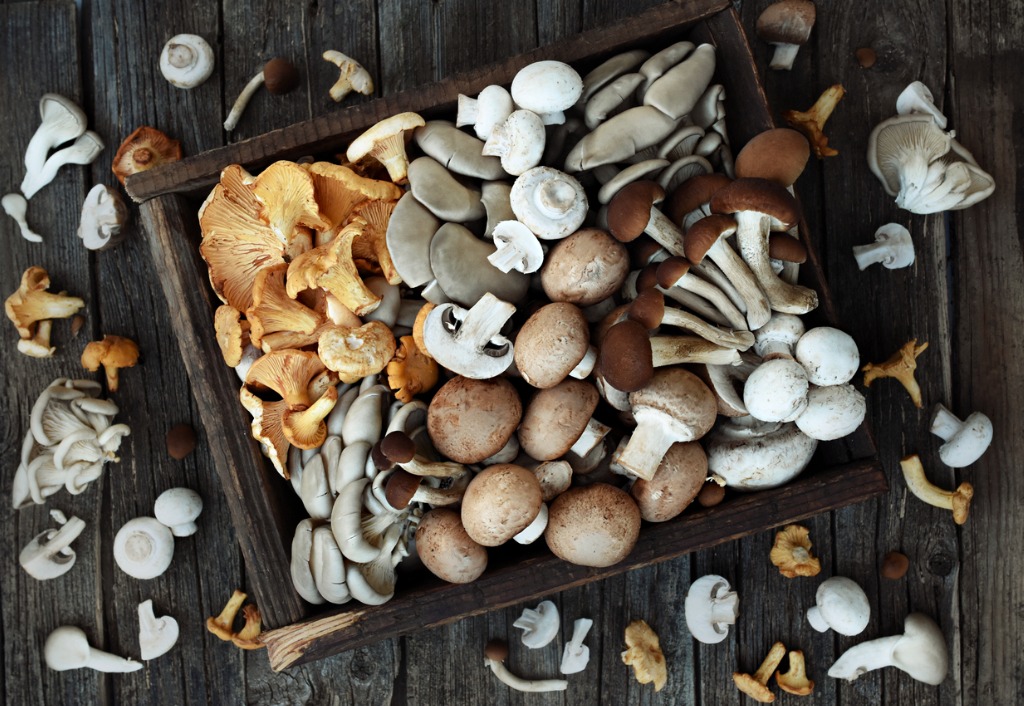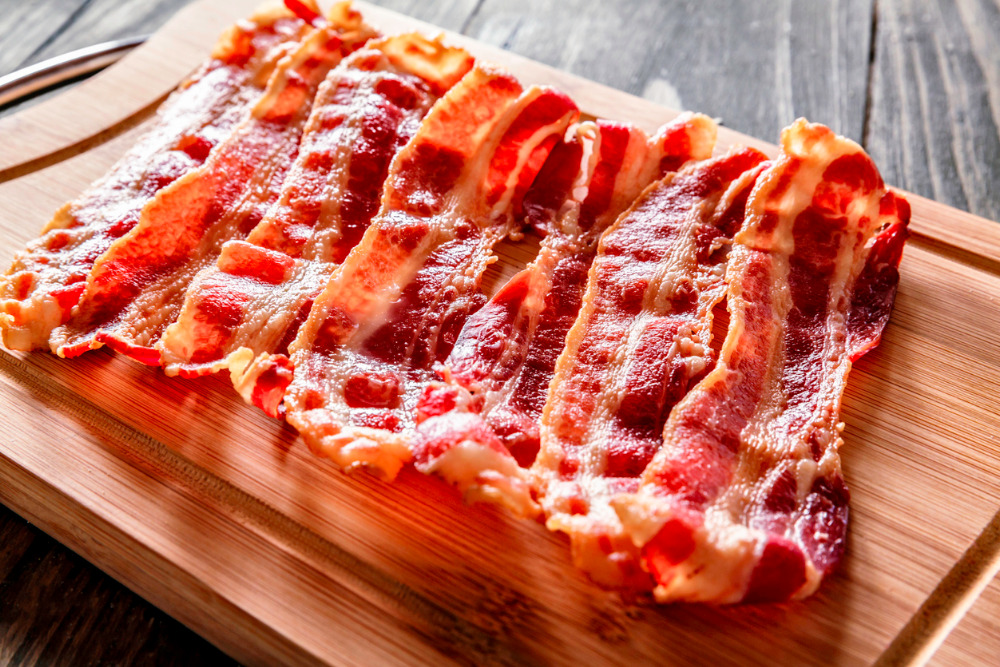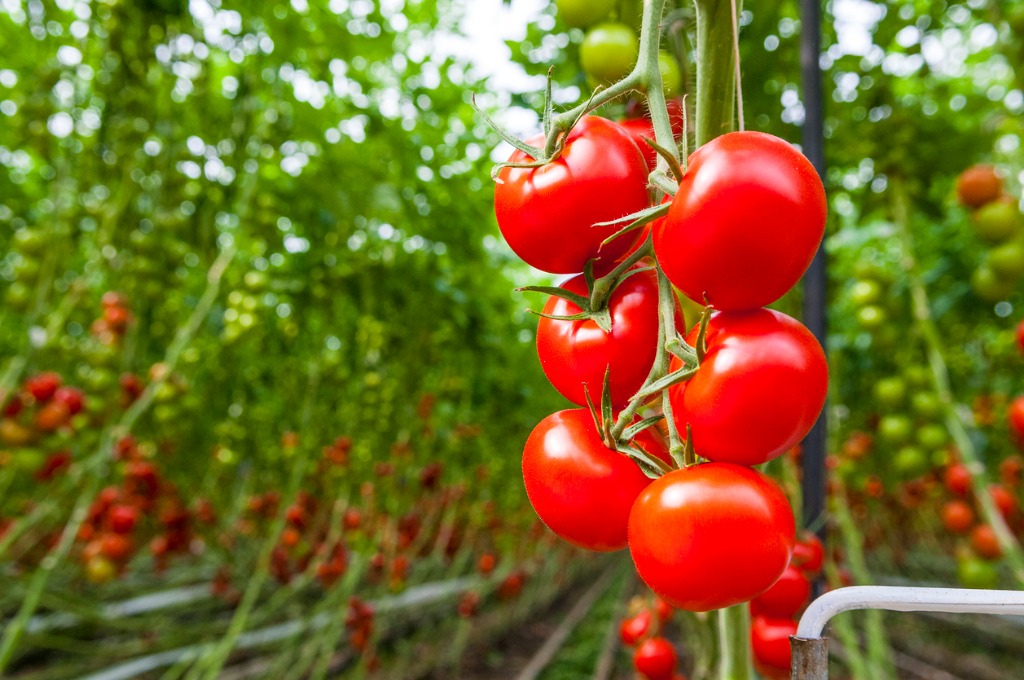Get a Load of These Wacky Fun Facts About Mushrooms!

When it comes to mushrooms, we here at Dogtown Pizza have always thought they were very cool and fun to learn about. In fact, we’ve been doing our research on this topic since way before The Last of Us introduced everyone else to how wild this unassuming cottagecore staple really is.
We’re not bitter about it—on the contrary, we’re very excited to share with you all our favorite wacky fun facts about our favorite fun guy, the mushroom!
Fungi Are Earth’s Biggest Life Forms
Move over blue whales! Fungal mycelium can grow for miles in all directions under the ground in search of food. You read that right: the iconic nightmare fuel in the show is based on true events from real life!
The dual-record-holder for being the world’s largest fungus and the largest living organism on the planet is a honey mushroom (Armillaria ostoyae). This single honey mushroom is around 3.5 miles wide and takes up an area of 2,385 acres in the Malheur National Forest in Oregon.
How long did it take to grow that big? Are we in danger?
Not at all. The mushroom is estimated to be at least 2,400 years old (and it could possibly be much older), so it won’t overtake the continent within any of our lifetimes.
Mushrooms Can Stay Dormant Underground
The main part of the fungal body is the underground mycelium structure, made up of millions of thread-like hyphae. In the interest of ensuring the survival of its species by reproducing, the fungal body produces mushrooms.
Mushrooms need specific temperatures and humidity levels to thrive. Rather than taking their chances in imperfect conditions, some mushrooms are able to stay dormant underground for years (or even decades!) until the weather conditions are ideal for producing mushrooms to distribute spores.
Mycelium Is an Effective Natural Packaging Material
One more about mycelium and then we swear we’ll talk about something else! There are biotech companies currently developing 100% compostable packaging materials using fungal mycelium and agricultural byproducts.
With a texture similar to Styrofoam, the mushroom packaging can be used for almost anything! Versus Styrofoam, it’s no comparison: while Styrofoam takes about 500 years to biodegrade, the mycelium packaging (we hope someone will call it Myrofoam) takes as little as 45 days to compost.
Mushrooms Have Gills and Catapults
To distribute their spores and continue their lineage, mushrooms disperse spores in two phases.
First, they eject spores from their gill’s surface—yes, mushrooms have gills, and we love that! They do this using surface tension catapults—yes, mushrooms have catapults, and we love that too!
The second phase was long thought to be passive, with the mushrooms relying on whatever winds happened by to distribute the spores from their caps. Recent research shows that some mushrooms are actually able to create their own airflows to distribute their spores.
Fungi Are More Like Animals Than Plants
You might look at mushrooms and obviously declare that they’re plants. They look like plants; they’re stationary; they grow in the ground—you know… plants. Recent discoveries based on ongoing research seem to suggest that, when it comes to mushrooms, looks are deceiving!
Rather than convert sunlight to energy through photosynthesis like plants, mushrooms absorb nutrients from organic matter. Their cells are more similar to animals than plants, and they contain a substance that is found in animals but not in plants. Basically, mushrooms are the sea anemones of the woods.
Mushrooms Are the Fruit of the Fungus
We know what you’re thinking: we just told you fungi are animals, and now we’re saying they have fruit. How can animals have fruit?
Once again, we’d like to compare them to sea anemones: mushrooms are the fruiting bodies of the larger underground fungal structure. How much larger is it? The mushrooms you see sprouting up represent about 5% (on average) of the total surface area of the whole fungus!
If Mushrooms Were Pokémon, They’d Be Lightning Type
Japanese farmers have known for thousands of years that lightning strikes made mushrooms grow in more plentiful quantities. Recent research has confirmed that this is true and wasn’t a case of misidentifying the cause.
By bombarding several species of mushrooms with artificial lightning, researchers were able to significantly increase the crop yield compared to mushrooms that were farmed in similar conditions but minus the artificial lightning bombardment.
The effect varied by species, but exposure to indirect lightning strikes did cause mushrooms to multiply and was especially effective on shiitake mushrooms, consistently doubling the crop yield.
Some Mushrooms Can Glow in the Dark
So far, researchers and scientists are aware of over eighty different species of bioluminescent fungi—and more species are being discovered all the time! Bioluminescent mushrooms use luciferins, the scientific name for light-emitting compounds, to glow and attract insects to help spread their spores.
Some Mushrooms Are Self-Destructive
Shaggy Mane mushrooms are delicious when picked at the right stage, but you need to find them while they’re still buttons with white gills. When they mature, their gills turn pink and fill with black liquid that drips onto the ground, spreading their spores—this explains the mushroom’s other name: the Shaggy Ink Cap.
Some Mushrooms Are Dangerous
While it can be fun and rewarding to forage for wild mushrooms, remember to always make sure you’ve carefully and accurately identified the mushrooms you’ve collected before eating them. If there’s any question about what you’ve found, don’t risk it.
Maybe you want to add more mushrooms to your diet for the many health benefits and the delicious umami flavor boost, or maybe you just want a themed meal while you settle in for a watch party featuring a certain popular mushroom-based zombie television series. Whatever your reason, we support your decision—and honestly, we can’t think of a bad reason to eat more mushrooms!
You can find mushrooms on Dogtown Pizzas like our Deluxe and Veggie Pizzas (and if you want to add mushrooms to any other Dogtown Pizzas, we won’t argue). Look for our pizzas in the freezer aisle of grocery stores in St. Louis. Enjoy!





This Post Has 0 Comments